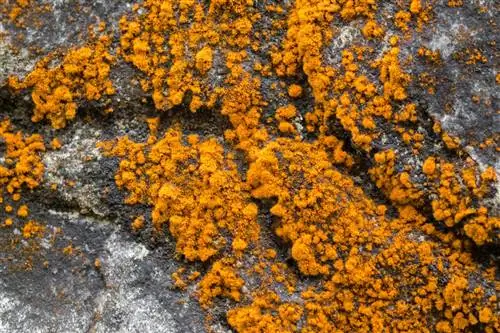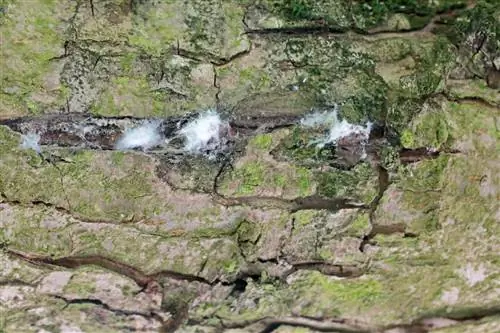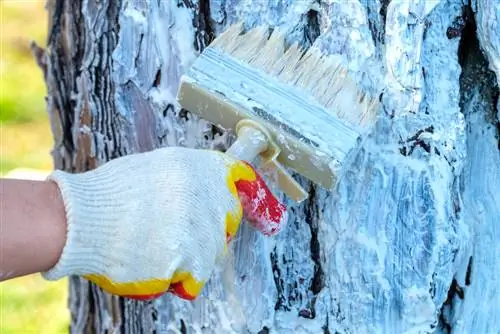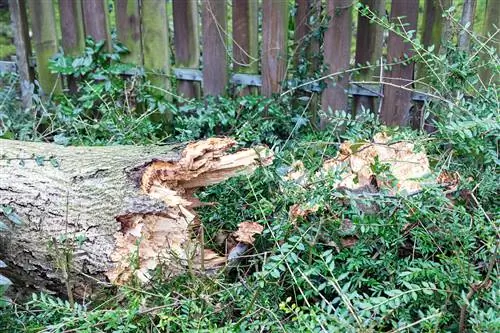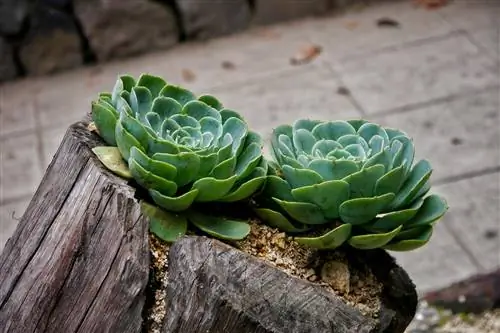- Author admin [email protected].
- Public 2023-12-16 16:46.
- Last modified 2025-01-23 11:19.
If the tree puts on a rusty red coat, the discoloration raises questions. This guide is all about questions about the cause and potential damage to the tree. This is how rust occurs on the tree trunk. This is what you can do.
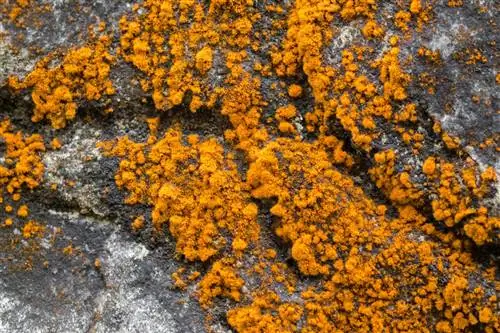
Is rust on the tree trunk harmful to the tree?
Rust on the tree trunk posesno danger to the tree. The rusty discoloration is caused by agreen algae that produces a reddish dye. Trentepohlia aurea is not a parasite, but carries out photosynthesis and covers the water and nutrient requirements from the air.
How does rust develop on a tree trunk?
The trigger for rust on tree trunks is thegreen algae Trentepohlia aurea The native airborne algae grows preferentially on the weather side of trees near water. The microscopic cells contain carotenoids, which produce a reddish pigment and give the bark a rusty color.
Indicator of good air quality
Rusty discoloration of tree bark has only been attracting attention for a few years. As long as our air was contaminated with sulfur, rust on tree trunks was rare. Trentepohlia aurea algae are finicky and only grow when the air quality is crystal clear.
Is rust on tree trunks harmful?
Rusty bark isnot harmful for the tree. The algae that cause the problem live independently and do not penetrate the tissue. Rather, Trentepohlia aurea carry out photosynthesis independently, obtaining nutrients and water from the air; hence the name air algae. The chlorophyll produced is green. For this reason, the type of algae is classified as green algae, although it leaves a rusty-red coating on the bark. Apart from the rusty color, the tree bark is not damaged, but only acts as a base.
How to remove rust from tree trunk?
To remove rust from the tree trunk, you have toscrubbing vigorously The rusty coating can only be removed from the bark using muscle power and a brush. However, you should only resort to strenuous cleaning if you consider the discoloration on the tree to be a visual nuisance.
The flip side of the coin is that, in the worst case scenario, you injure the tree bark and deprive it of its protective function. Even tiny wounds in the bark provide an ideal target for pests and diseases.
Tip
Rust-red fungi on tree trunks are harmful
Rust-red coloring of the tree bark does not necessarily give the tree the all-clear. In the early stages of the infestation, orange fungi can be confused with rusty algae growth by the untrained eye. When in doubt, look for orange fruiting bodies that reveal harmful fungal species. These include the brown rot fungi sulfur porling (Laetiporus sulphureus) and lacquer porling (Ganoderma lucidum) or cinnabar fungus (Pycnoporus cinnabarius), which can cause white rot.

